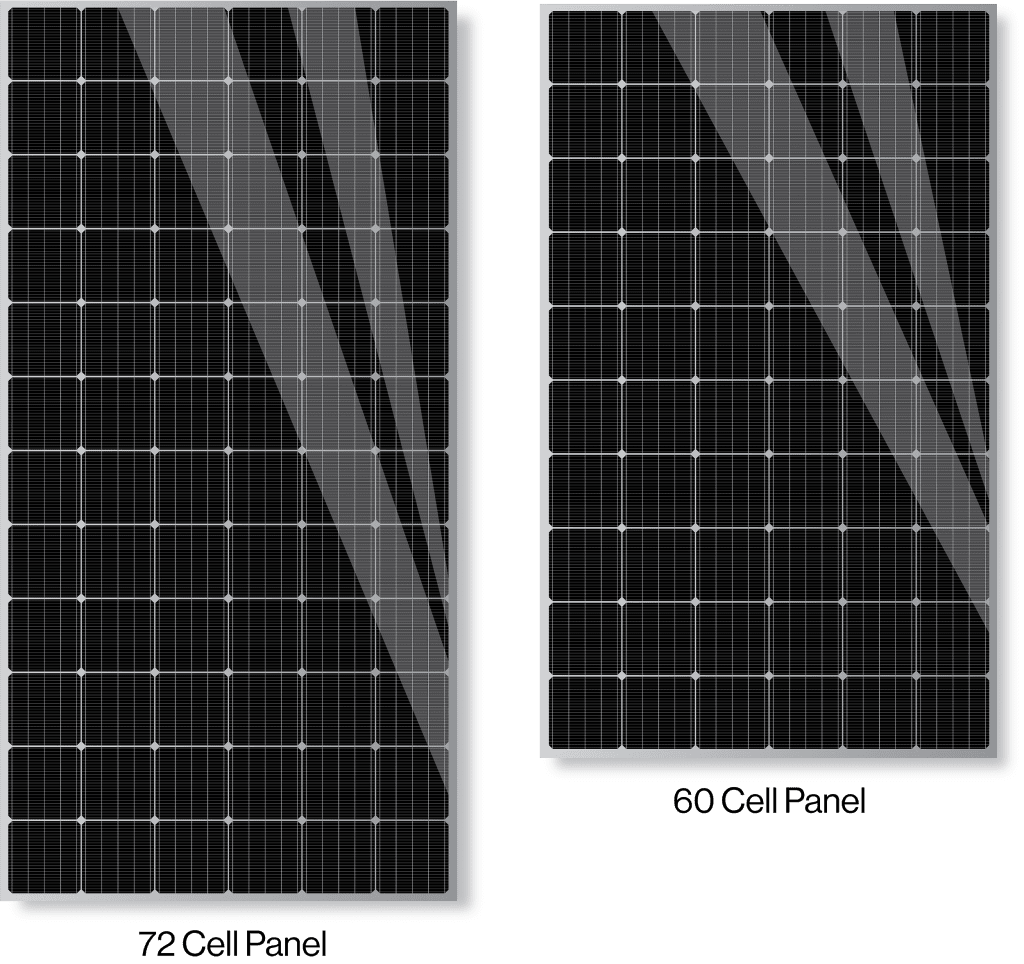When answering the question ‘What is a Monocrystalline Solar Panel’ we can go for a very simple explanation or a very in depth, technical and confusing one.
The latter would take a while and, in all honestly, be pointless – I don’t know how the inside of my laptop works, but I know how to use Word!
So, here’s a simple explanation of what ‘mono’ crystalline means.
How do monocrystalline solar panels work?
PV solar panels are made up of ‘photovoltaic’ cells that convert the light energy from the sun into electricity.
These differ from what is known as Thermal Solar – which uses the heat energy from the sun to make hot water.
Photovoltaic cells are made of silicon, the second most abundant element on the planet, and inside that silicon is where the magic happens.
Photons, which are particles of light, hit the silicon and excite the electrons inside.
When the electrons are excited they ‘move’ from a negative to a positive place which converts the energy into electricity.
The cells in the Monocrystalline panels are made of one single crystal of silicon – hence ‘monocrystalline’– which increases efficiency.
However, creating a single crystal of silicon is more expensive than creating a whole bunch of crystals mashed together.
Polycrystalline panels, in which the cells are made of many silicon crystals all mashed together, are less efficient but cheaper to produce.
Learn more about how solar panels work.
What should you look for in a Monocrystalline Solar Panel?
Well, there certainly isn’t an easy answer to this!
Monocrystalline solar panels come in many sizes and many different styles, but let’s have a look at the most popular.
60 and 72 Square Cell Monocrystalline Solar Panels
Although the 60 and 72 cell panels behave in exactly the same way, there may be advantages to using one or the other.
60 are smaller and will fit in places that have restricted space, but you’ll need more of them as they generally generate smaller amounts of electricity.
60 Cell panels are usually used in installations where micro-inverters are needed due to shading or other circumstances.
72 cell solar panels will produce more electricity per panel, which makes them the go-to choice for domestic installs.
They are easily integrated into systems that use string, or hybrid inverters, and will usually work out to be a cheapest option.

Half Cell Monocrystalline Solar Panels
Once again, the principle of generating electricity from these panels is exactly the same as any other PV panel.
However, splitting the cell in 2 actually reduces the resistance within the material and allows the current to flow more freely.
This increases the overall efficiency of the panels by a few percent.
Monocrystalline Solar Panels costs?
This is a question we get asked a lot and the perfect answer is a bit vague, as they cost different amounts depending on quality and make.
There is also the fact that you will be cutting your cloth to suit your needs.
So, we think the best way to look at pricing a solar panel would be in square metres.
When you use this metric, the prices range from about £120 – £350 a square metre.
Advantages and disadvantages of monocrystalline solar panels
There are very few disadvantages to monocrystalline panels
In fact, we can only really think of one: the price.
Disadvantages
High Cost
It’s not that these panels cost a fortune, it is just they are much more expensive than their polycrystalline counterparts.
If you were to price polycrystalline panels with the square metre metric, they come in at about £90 – £200, so that’s quite a lot less if you are coving large areas.
Advantages
Higher Yield
As domestic installs aren’t usually enormous, the advantage of the monocrystalline is they are more efficient, so you need less coverage to get the same yield.
This also gives you the advantage of needing fewer panels for the roof.
In a domestic system, the cost is probably the same as an equal yield from polycrystalline.
Looks Cool
Another advantage is the way a monocrystalline panel looks – and that is a complete accident.
When silicon crystals are all mashed together during the manufacturing process, they appear to be a vibrant blue colour.
This is why polycrystalline panels are blue.
However, the process of creating single crystal silicon makes the base material look black.
So, with a little bit of design forethought, you can make black on black panels that look ultra-sleek on your roof.
Longevity
This is an advantage that most solar panels come with – their incredible lifespan.
Silicon will degrade over time and the efficiency of the panel will degrade with it.
However, this degradation is at a snail’s pace of 0.5% per year – so the panels are still at 80% of their original efficiency after 25 years.
25 years is the industry standard for replacing your panels as the yield drops below an acceptable level. We offer 30..
The panels will still continue to produce electricity for another 25 years though.
Learn more about how long solar panels last.
Learn more about solar panel efficiency.
Monocrystalline vs polycrystalline solar panels
Just because monocrystalline solar panels are more efficient that doesn’t necessarily make them the best choice for every situation.
Though, they are perfect for domestic installation.
| Specs | Polycrystalline | Monocrystalline |
| Efficiency | 13% – 19% | 19% – 24% |
| Cost | £90 – £120 per m2 | £120 – £350 per m2 |
| Lifespan | 25 years plus | 25 years plus |
| Manufacturing | Cheaper and less wasteful | Expensive and wasteful |
| Appearance | Blue/white and black | Black on black |
Best Monocrystalline Panels
Time to put our money where our mouth is and tell you what we use here at Solar Fast.
We’ve opted for the 108 Half Cell Monocrystalline panels from DMEGC Solar for our 2022 – 2023 installations but we are always looking at new technology and more exciting developments.
We love the way these panels look and our customers agree with us.
Here are the main specs of our current panels.
| DMEGC Solar MONO-FACIAL MODULE DM440M10RT-54HBB | |
| Cells | N-Type Monocrystalline |
| Weight | 20.6kg |
| Size | 1722x1134x30mm |
| Cell Count | 108 (6 x 18) |
| Efficiency | 22.02% |
| Wattage | 410W |
| Warranty | 25 Years – 30 Years |







